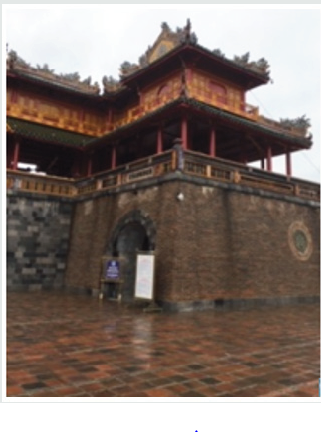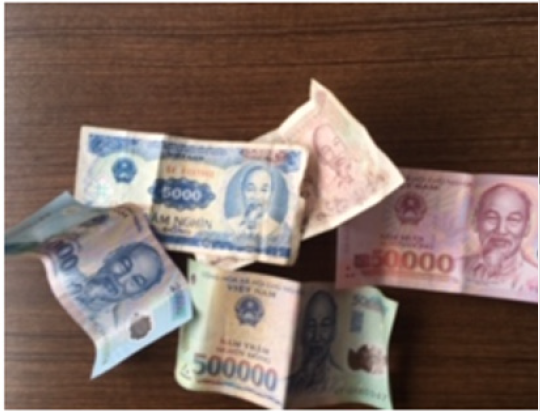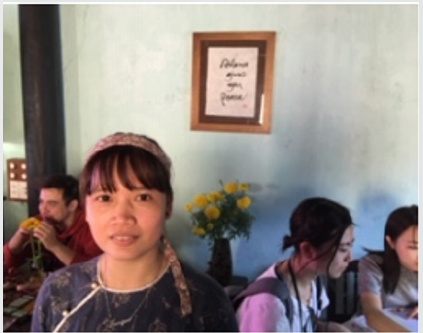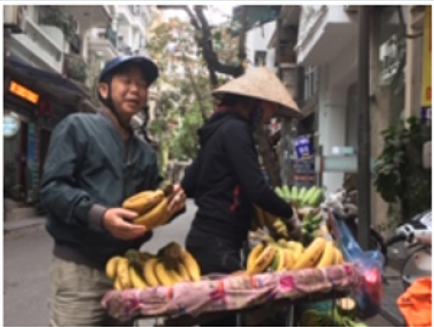
Lupine Publishers Group
Lupine Publishers
Menu
ISSN: 2641-6794
Research Article2641-6794 
Vietnamese Chronicle. A brief report from a distant part of the world Volume 5 - Issue 1
Pedro Calmon Av1* and Joao Vicente Ganzarolli de Oliveira2
- 1Cidade Universitaria, Rio de Janeiro, Brazil
- 2Tercio Pacitti Institute of the Federal University of Riode aneiro, Brazil
Received: March 20, 2020; Published: June 18, 2020
Corresponding author:Pedro Calmon Av, Cidade Universitaria, Rio de Janeiro, Brazil
DOI: 10.32474/OAJESS.2020.05.000203
Abstract
This article is about Vietnam, a place I wanted to visit since my childhood. Forty years ago, I took the road and started to struggle for the accomplishment of my geographical dreams. Simply by coincidence, in 1980, I headed for Argentina, whose name commences with the first letter of our alphabet; my second international trip happened to be a “B” one, as I decided to make for Bolivia in 1982; after four decades travelling around the world and without having found any place to call “home” yet, Vietnam (a “V” country) was visited by me in 2020. The name New Zeeland is on the top of my current list and has a capital “Z” within it; does that mean that I am destined to finally settle down somewhere in the next few years?
Keywords: Vietnam, Communism, Religion, Disability, Travels
Introduction
Figure 1 Half of my childhood and teenage years were spent
hearing, reading, watching and talking about the War of Vietnam
(1955-1975). The subject became compulsive on a planetary scale;
its ubiquity in the media made it subject number one in the hearts
and minds of everybody. Therefore, I was no exception to the rule;
in fact, I was just one more unity to be added to the statistics. Along
with the Counterculture and its variants (the Beat Generation, the
hippie and the punk subcultures, the Beatles, the Rolling Stones
and the rock and roll in general, etc.), Vietnam was the fashion in
those days. To tell the truth, the very word “Vietnam” may have
been one of the first I learnt to speak, giving my having been born
in the very beginning of the 1960s, a time that was “the closest
the Cold War came to escalating into a full-scale nuclear war”[1].
George Englund’s The Ugly American (1963), Alfred Hitchcock’
Topazio (1969) and Ted Post’s Go Tell the Spartans (1978) – based
on Daniel Ford’s novel Incident at Muc Wa (1967) - are among the
few motion pictures that are faithful to the truth concerning this
crucial phase of our history.
My first intention in writing this article was not to talk about
the war, neither to portray nor convey any political landscape
concerning the period spanning from 1955 to 1975. As much as I
could, I tried not to delve into many details concerning Vietnam’s
communist fate. I could not help, however, saying something
about the fate of the Vietnamese people, especially with respect to disability (which happens to be my field of research) and religion,
being this sphere of human life the most affected when freedom of
though and of speech are under the constant threat of censorship
– as in the case of any and all Communist regime, being Vietnam
no exception to the rule. The following lines are basically a brief
account of a visit I made to Vietnam, besides an overview of some
geographical and cultural features of this land described as “one of
the most intoxicating destinations on planet earth”. Vietnam, the
same literary source states, is “a kaleidoscope of vivid colours and
subtle shades, exotic sights and curious sounds, grand architecture
and deeply moving war sites. The nation is a budget traveller’s
dream, with inexpensive transport, outstanding street food, goodvalue
accommodation and bia hoi perhaps the world’s cheapest
beer”[2].
It remains for me to tell that my childhood and teenage years
were also fed by my mother reports of a travel she made to Europe in
her youth (more precisely in 1950). Countries like Belgium, Holland,
France and Italy were no more than mere sounds in my first years
of life – just like “Vietnam”. It was these sounds that started to shape
my dreams about travelling and knowing personally some parts
of the earth. Vietnam was one of my dreamed targets, all of them
geographical abstractions, much like Baudelaire’s “Anywheres”,
exactly the kind of place “of which we had no memories and where
no one knew our names” [3]. The opportunity to make it a reality
came in February 2020.
The Land, the People… and some Religious Issues
Figure 2 Occupying the easternmost swath of the Indochinese Peninsula, Vietnam is a mostly hilly and forested land. Its 127,882 sq mi make of it the sixty-fifth largest country in the world, inhabited by 95,5 million people, thus ranking fifteenth when compared with other countries’ population. The human presence in what is now Vietnam is a fact since the Lower Paleolithic, as attested by some 500,000 years old fossils of Homo erectus found in the north of the country. Time passed, and different human groups overlapped each other until their combined cultural achievements converged to the Đông Sơn Bronze Age culture, so named after the northern Vietnamese village of Đông Sơn, where their remains were found. What is more, Đông Sơn’s influence “spread to other parts of Southeast Asia, including Maritime Southeast Asia, from about 1000 BC to 1 BC. The Dong Son people, who are also known as Lạc or Lạc Việt, were skilled at cultivating rice, keeping water buffalos and pigs, fishing and sailing in long dugout canoes. They also were skilled bronze casters, which is evidenced by the Dong Son drum found widely throughout northern Vietnam and South China. To the south of the Dong Son culture was the Sa Huỳnh culture of the proto-Chams” [4]. The homo vietnamiensis – if we can him so – started to be shaped in this cultural scenario. Yet more times than not, the influence from the giant of the North has been unavoidable. Chinese presence is a fundamental constant in the Vietnamese way of life.
In essence, Vietnam’s history is not different from that of other nations we may be more familiar with: we will find there the same cycles of dynasties, kingdoms, internal and international wars, territorial expansion and shrinking. As for particular historical landmarks, July 2 1976 is a date not to be forgotten for all Vietnamese; on that day, North Vietnam and South Vietnam merged by force of arms into one single country (the Socialist Republic of Vietnam). Atheism become the “religion” of the State, being all true forms of religion subjected to persecution. Not content with eliminating all other political rivals, Communist leaders usually do not want competition in the spiritual arena either: no other being can be worship but the Communist Party, the Communist People and the Communist Dictator (see North Korea and China). Notwithstanding, religiousness heroically survives in Atheistic Vietnam. Within this small spiritual universe, Buddhists are majority and Hindus minority. Christianity ranks second in terms of number of followers, but leads the ranking of martyrdoms. In fact, “The atheist dictatorship of Vietnam persecute all kinds of religion. In particular, Christians are most affected. Open Doors has ranged Vietnam on place 21. The country’s Communist regime can close churches without any reason. In 2012 the regime closed at least seven Catholic churches. A Catholic orphanage was also closed and a pastor was beaten by the regime’s authorities. In the Vietnamese countryside, the situation is worse as in the cities, because tribal leaders discriminate against Christians for their faith”[5].
More: “Christians in Vietnam are targeted by both the government and, especially in rural contexts, tribal leaders. The government has some level of tolerance for Christian groups, particularly Catholics, but if any believers are deemed to be politically active, they can be imprisoned. In places where religion and ethnic identity are closely tied, Christians who convert from traditional religions are often victims of pressure and violence from their families and communities. On the state level, villagers collude with local Communist authorities, beating believers, kicking them out of their villages and stoning places of worship during meetings. Local and national government authorities persecute the Christian minority through their laws, and Christian bloggers and political activists have been arrested and sentenced” [6].
It is not of today that Christians have been persecuted in Vietnam. Communism has only continued with a centuries-old tradition. Indeed, since the 16th century, Vietnam has bequeathed to eternity a great number of Christian martyrs; in the West, the best known of them seem to be the Blessed Andrew of Phu Yen (1624- 1644), also named the “Protomartyr of Vietnam”, and Saint Andrew Dũng-Lạc (1795-1839). As a matter of fact, “The tortures these individuals underwent are considered by the Vatican to be among the worst in the history of Christian martyrdom. The torturers hacked off limbs joint by joint, tore flesh with red hot tongs, and used drugs to enslave the minds of the victims. Christians at the time were branded on the face with the words ‘tả đạo’ and families and villages which subscribed to Christianity were obliterated” [7] (Figure 3).
Disability in Vietnam
Disability is, among many others, a sensitive issue in Vietnam. The country has one of the world’s highest rates of disable per capita [8], which means that nearly 15% of the Vietnamese population suffers from at least one kind of disability. A simple outing in Vietnamese cities and villages demonstrates that the expression accessibility, unfortunately, is not much more than a flatus vocis, i.e., a mere abstraction – or, as the nominalist philosophers would say, a name that lacks any individual and objective reality to correspond to. Nonetheless, progress has been made in recent years, as testified by the partnership between the Vietnamese Government and institutions like UNICEF, USAID (United States Agency for International Development) and ILO (International Labour Organisation). Mention must also be made of the Vietnamese institution called Hòa Nhập (“Reaching Out”), established in the historical city of Hoi An in year 2000, with the purpose of opening professional doors and windows for the disabled of Vietnam, thus providing them a better quality of life. In their own words, “Reaching Out (Hòa Nhập) was established in 2000 with the vision of providing opportunities for disable people to learn skills and gain meaningful employment so that they are able to integrate fully with their communities and lead independent and fulfilling lives. Over the years, our social enterprise, Reaching Out, has grown to a multi-location group of businesses where people of different abilities can showcase their unique talents in an array of exquisitely crafted goods and gracious services. Driven by strong core values and a commitment to quality and integrity, more than 70 employees, both able bodied and disable, now comprise a strong team who, together, have created this world-renowned enterprise” [9].
References
- Brantly Womack etalii.
- Celeste Brash (2011) Southeast Asia on a Shoestring, Victoria, Australia, pp. 807.
- Alain de Botton(2014) The Art of Travel, London, Penguin Books, p. 39.
- Keith W Taylor et al (2013) The Art of Travel, London, UK.
- https://www.conservapedia.com/Religion_and_Atheism_in_Vietnam.
- https://www.opendoorsusa.org/christian-persecution/world-watch-list/vietnam/.
- Donald Attwater, Rachel John Catherin et alii. http://andrew4jc.blogspot.com/2007/06/vietnamese-martyrs.html.
- https://www.angloinfo.com/how-to/vietnam/healthcare/people-with-disabilities.
- https://reachingoutvietnam.com/about-us/our-story/.

Top Editors
-

Mark E Smith
Bio chemistry
University of Texas Medical Branch, USA -

Lawrence A Presley
Department of Criminal Justice
Liberty University, USA -

Thomas W Miller
Department of Psychiatry
University of Kentucky, USA -

Gjumrakch Aliev
Department of Medicine
Gally International Biomedical Research & Consulting LLC, USA -

Christopher Bryant
Department of Urbanisation and Agricultural
Montreal university, USA -

Robert William Frare
Oral & Maxillofacial Pathology
New York University, USA -

Rudolph Modesto Navari
Gastroenterology and Hepatology
University of Alabama, UK -

Andrew Hague
Department of Medicine
Universities of Bradford, UK -

George Gregory Buttigieg
Maltese College of Obstetrics and Gynaecology, Europe -

Chen-Hsiung Yeh
Oncology
Circulogene Theranostics, England -
.png)
Emilio Bucio-Carrillo
Radiation Chemistry
National University of Mexico, USA -
.jpg)
Casey J Grenier
Analytical Chemistry
Wentworth Institute of Technology, USA -
Hany Atalah
Minimally Invasive Surgery
Mercer University school of Medicine, USA -

Abu-Hussein Muhamad
Pediatric Dentistry
University of Athens , Greece

The annual scholar awards from Lupine Publishers honor a selected number Read More...








